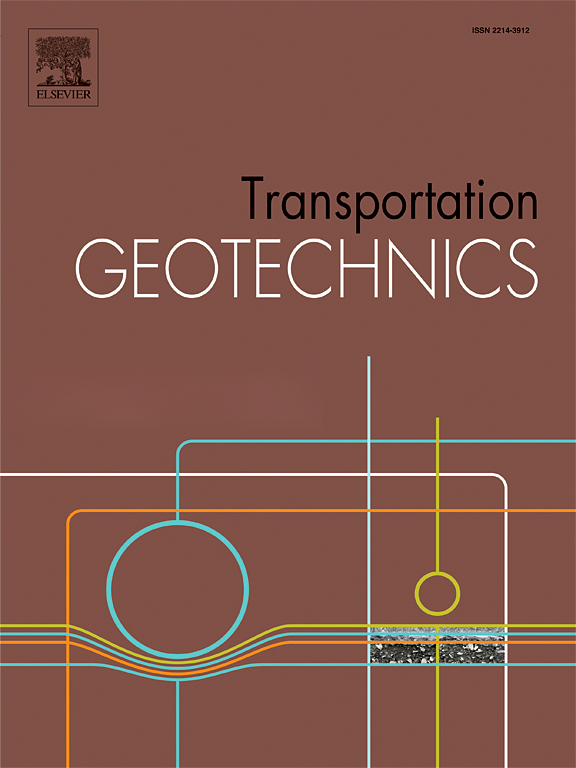Dynamic analysis of high-speed vehicle-track coupled system due to lateral differential deformation induced by subgrade frost heave
IF 4.9
2区 工程技术
Q1 ENGINEERING, CIVIL
引用次数: 0
Abstract
Subgrade frost heave poses a serious challenge to service safety of high-speed railways in cold regions. Traditional studies often regard subgrade frost heave as uneven deformation along the longitudinal direction. However, this approach is limited as it fails to account for the spatial variability of subgrade frost heave. Specifically, it overlooks lateral differential deformation induced by subgrade frost heave, and neglects its effect on the lateral deformation of the track and dynamic responses of the vehicle. This paper conducts a comprehensive analysis of the mapping relationship between lateral differential deformation of the subgrade and rail deformation, as well as its effects on the dynamic performance of vehicle-track system. Firstly, a refined finite element model of the ballastless track-subgrade system is developed to investigate the correlation between lateral differential deformation of the subgrade and rail deformation. Subsequently, a vehicle-track coupled dynamics model is established to assess the effects of sunny-shady slope ratio, amplitude, and wavelength of lateral frost heave on system dynamic responses. Finally, a control threshold for frost heave is proposed based on the system dynamic responses. The research results indicate that lateral differential deformation induced by subgrade frost heave significantly affects both vertical and lateral dynamic performance, reducing the riding comfort and even threatening driving safety. These findings provide theoretical support for operation and maintenance of ballastless tracks in seasonal frozen soil regions.
求助全文
约1分钟内获得全文
求助全文
来源期刊

Transportation Geotechnics
Social Sciences-Transportation
CiteScore
8.10
自引率
11.30%
发文量
194
审稿时长
51 days
期刊介绍:
Transportation Geotechnics is a journal dedicated to publishing high-quality, theoretical, and applied papers that cover all facets of geotechnics for transportation infrastructure such as roads, highways, railways, underground railways, airfields, and waterways. The journal places a special emphasis on case studies that present original work relevant to the sustainable construction of transportation infrastructure. The scope of topics it addresses includes the geotechnical properties of geomaterials for sustainable and rational design and construction, the behavior of compacted and stabilized geomaterials, the use of geosynthetics and reinforcement in constructed layers and interlayers, ground improvement and slope stability for transportation infrastructures, compaction technology and management, maintenance technology, the impact of climate, embankments for highways and high-speed trains, transition zones, dredging, underwater geotechnics for infrastructure purposes, and the modeling of multi-layered structures and supporting ground under dynamic and repeated loads.
 求助内容:
求助内容: 应助结果提醒方式:
应助结果提醒方式:


